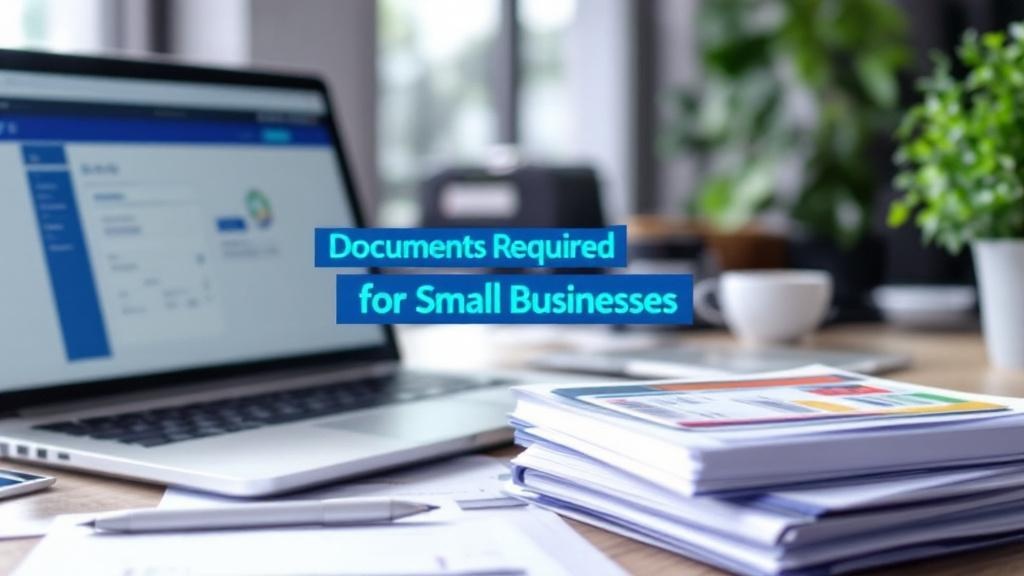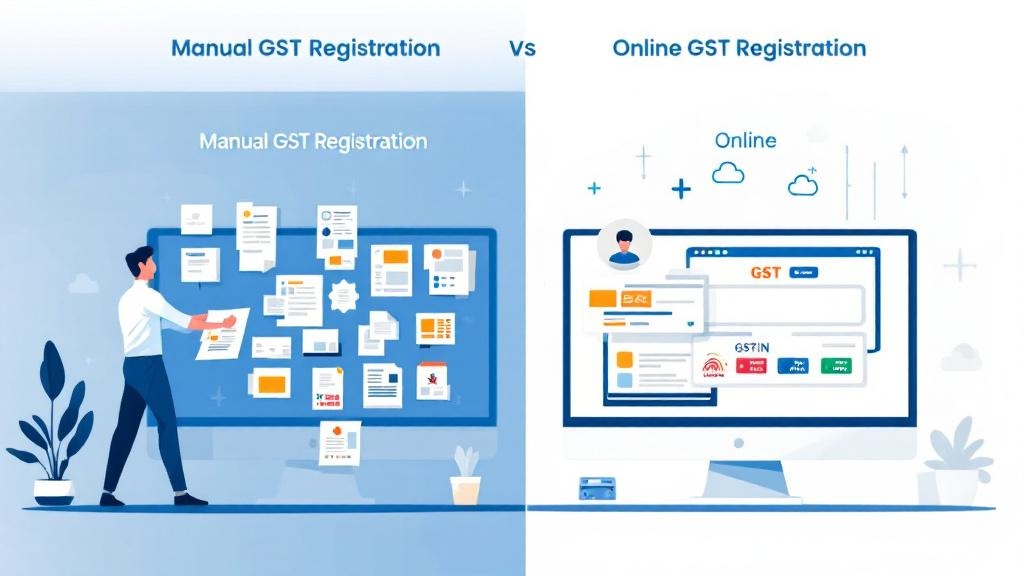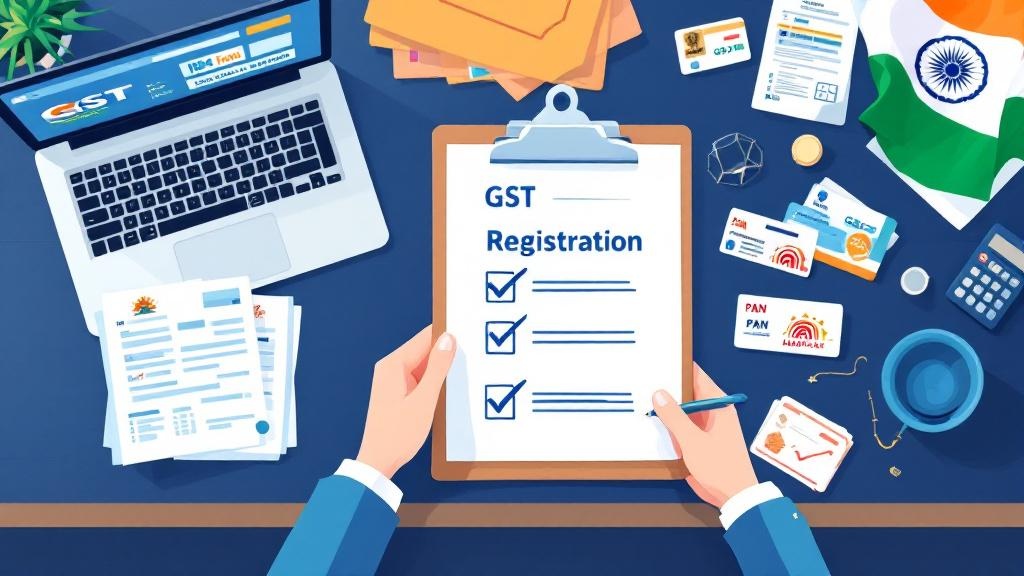The Goods and Services Tax (GST) has revolutionized the taxation system in India by consolidating multiple indirect taxes into one. If you own a small business and are looking to get GST registered, you’ve come to the right place. Navigating through the registration process can seem a bit daunting, but having the correct documents on hand can make the process smoother.
In this article, we will break down the documents required for GST registration for small businesses, guiding you step-by-step through what you need to prepare. Whether you’re just starting or have been running a business for a while, this guide will make the process easier for you.
What is GST Registration?
Before diving into the documents, let’s briefly understand what GST registration is. GST registration is the process through which businesses are recognized by the government under the Goods and Services Tax Act. It’s a mandatory requirement for businesses that meet certain turnover thresholds or engage in interstate transactions.
If your business crosses the annual turnover limit or you intend to deal in interstate sales, GST registration is crucial. With GST registration, you get the benefit of claiming input tax credit (ITC), avoid penalties, and comply with the government’s tax regulations.
For a step-by-step guide on GST registration, you can refer to FinTax24’s GST services.
Why is GST Registration Important for Small Businesses?
For small businesses, GST registration is not only a legal requirement but also offers several benefits:
-
Legal Recognition: Your business gets official recognition under the law.
-
Tax Benefits: Registered businesses can claim input tax credit (ITC) on taxes paid for business purchases.
-
Increased Credibility: GST registration gives your business a more professional image, increasing trust among customers.
-
Interstate Transactions: Only businesses with GST registration can engage in interstate transactions.
Now that we know the importance of GST registration, let’s dive into the documents required to complete the registration.
Essential Documents for GST Registration
The process of GST registration requires certain documents to verify the identity, address, and business operations. Here’s a detailed list:
1. PAN Card of the Business/Proprietor
The Permanent Account Number (PAN) is mandatory for GST registration. Whether you’re a sole proprietor or a partnership, the business PAN card is required. If you have a partnership, the PAN card of all partners will also be required.
Tip: Ensure that the name on the PAN card matches the name on your other documents.
2. Aadhaar Card
The Aadhaar card of the proprietor or business owner is a crucial document for verification. It helps the authorities verify your identity electronically, making the process faster and more streamlined.
For partnership firms, all partners should provide their Aadhaar numbers.
3. Proof of Business Address
To establish your business’s location, you’ll need to provide a proof of business address. This can be:
-
Rent agreement or lease deed (if the property is rented)
-
Utility bills (electricity bill, water bill, etc.)
-
Municipal Khata or property tax receipt (if you own the property)
The document should not be older than two months.
Tip: If the business is located in a shared office space or co-working environment, ensure that you have a NOC (No Objection Certificate) from the landlord.
4. Bank Account Details
A bank account in the name of the business is required. You’ll need to submit the following details:
-
Bank account statement or the first page of the passbook
-
A canceled cheque
-
Bank account number and IFSC code
The bank account should preferably be in the name of the business or the business entity.
5. Business Constitution Proof
The business constitution proof depends on the type of business you have. It could be:
-
Sole Proprietorship: Your Aadhaar and PAN card.
-
Partnership Firm: A partnership deed signed by all partners.
-
Private Limited Company: Incorporation certificate and Memorandum of Association (MOA) and Articles of Association (AOA).
-
Limited Liability Partnership (LLP): LLP agreement and incorporation certificate.
-
Trust/NGO/Society: Trust deed, registration certificate, and PAN card.
Each structure has its own requirements, and you should make sure you have the right document.
6. Photographs of the Proprietor/Partners/Directors
The GST registration form requires a recent photograph of the business owner or authorized signatory. The photo should be clear and in passport size.
Tip: Make sure the photo is a recent one, not older than six months.
7. Digital Signature
If your business is a company or LLP, a digital signature (DSC) is required to sign the GST application. While it’s not required for sole proprietorships or partnerships, having one can speed up the registration process.
You can obtain a DSC from any government-recognized agency.
8. Additional Documents (If Applicable)
Depending on the type of business you run, you may need to provide additional documents:
-
Import/Export Code (IEC): For businesses involved in export or import.
-
Taxpayer Identification Number (TIN): If you are already registered under VAT or service tax.
-
GSTIN of the Previous Business: If you’re migrating from an old GST regime or have already been previously registered.
Step-by-Step Process for GST Registration
Once you have all your documents ready, the GST registration process becomes a straightforward task. Here’s how you can go about it:
Step 1: Visit the GST Portal
Go to the official GST portal at www.gst.gov.in and create a login account. If you are unsure about the procedure, you can consult a professional service like FinTax24 to guide you through the process.
Step 2: Fill the Application
Once logged in, fill out the GST application form (Form GST REG-01) by entering business details, contact information, and the documents you’ve gathered. Make sure to upload the required documents in the specified formats.
Step 3: Verification of Documents
The GST officer will verify the information you have provided. This may take a few days, depending on the complexity of your application.
Step 4: GSTIN Issuance
After the verification process, if everything is in order, you will receive your GSTIN (GST Identification Number), which is unique to your business. You are now a GST-compliant business.
Common Mistakes to Avoid During GST Registration
To ensure that your GST registration process is smooth, avoid these common mistakes:
-
Incorrect or Mismatched Details: Ensure all details, like your PAN, name, and business address, match across documents.
-
Incomplete Documents: Double-check that all required documents are uploaded in the correct format.
-
Failure to Respond to Queries: If the GST officer asks for additional information or clarification, respond promptly to avoid delays.
Conclusion
GST registration is a key milestone for any small business that wants to grow and comply with the law. By preparing the required documents in advance, you can make the entire process quicker and hassle-free.
From the PAN card to business address proof, each document plays a critical role in ensuring that your GST registration is completed successfully.
Need more help or guidance in registering for GST? Visit FinTax24’s GST services to get expert assistance with your GST registration.
Stay compliant, stay tax-efficient, and watch your business thrive under the GST system!







Comments (0)